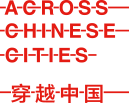Beijing Design Week with the collaboration of Dontstop architettura presents Across Chinese Cities – Beijing an unprecedented investigation into the Chinese capital’s spatial program woven into its ‘otherly modern’ project (Hay, Double Modernity, Para-Modernity, 2008) which situates its traces by taking the historical district of Dashilar as a case study. Over the centuries the strategic imagination of Chinese rulers has forged a policy culture privileging locality and flexibility, where decentralization and self-governance were encouraged as a conduit towards a system of controlled autonomies expanding from the centre outwards into the peripheries. Spatial devices informing administrative and economic scaling, from imperial times until nowadays, function so to allow a productive vacillation between centralizing and devolutionary forces to territorialize political directives with geo-cultural specificity – from regions and cities to urban districts. This seemingly dichotomous metaphor captured in the tiao/kuai (vertical/horizontal) expression, conjures a map of networked clusters of productivity and power whose relationship to the centre is shaped across both metaphorical and literal practices of border crossings. The project is a conversation between built forms and communities around an architecture of resilience and relationships unique to Beijing and the Dashilan area. The one square kilometre wide zone southwest of Tian’anmen Square is a densely populated quarter of traditional courtyards and alleys (hutongs) where specialized craftsmanship, literature and performing arts once flourished so making it the commercial and cultural heart of the capital since the Ming Dynasty. Although retaining its architectural authenticity Dashilan has faced rapid degradation over the past decades. A timeline of city sections presents the evolution of Beijing city over the past 100 years, while being interpolated with a relational archipelago of interdisciplinary design projects responsive to Dashilar’s aging infrastructure, and endangered social and urban ecosystem. Across Chinese Cities – Beijing provides narrative disclosure to the developments of situated architectural knowledge across the Chinese capital while exposing transcultural and transdisciplinary dynamics of creative and social appropriation unique to Dashilar, where the street is a key site of public discourse and a minimal unit of architectural measure. The exhibition enmeshes visitors in an experiencing of Beijing’s paradigmatic formation: a porous system of self-enclosed neighbourhoods that embody the dialectical interaction between control and informality that has informed practices of urban scaling over centuries.
The exhibition expounds upon Rem Koolhaas’ curatorial premise of an “Absorbing Modernity” by perusing the productive vacillation of policing directives and social forces that shaped the urban history of Beijing over centuries, and are here set in dialogue throughout two juxtaposed sections: “Across City Sections” and “Across Dashilar”
The spatial arrangement of the two components of the show elicits cross-references and counterpoints between the city’s macro transformations of a seemingly modernistic evolvement along 100 years, and the micro change-agents that traversed the history of Dashilar ever since its foundation as the ‘outer city’ during the Yuan Dynasty.
“Across City Sections” offers an overview of Beijing’s urban mutation in an installation consisting of a map of the city and a linear timeline marking five crucial moments during its history, realized as five 7m-long, 3D printed models scaled 1:500. From within these spatial and temporal sections, the invariant core of the Forbidden City and the grand transformations of the urban fabric are set in contrast with the small-scale changes of Dashilar, attesting to its adaptive capacity across different historical thresholds:
1488 – Foundation of Dashilar
1914 – Construction of experimental Xiang Chang District
1958 – Inauguration of Tian’anmen Square
1992 – Opening of Henderson Centre, first Shopping Mall
2014 – Beijing today
The dialogue between the overall exhibition and the central installation designs both a unified and synchronous glance at the city of Beijing, and underlines styles, practices and elements of resilience that cut across ages, while re-establishing an intimate relationship between the human body and the built environment.
Countering the chronological linearity of this central portion of the show, “Across Dashilar” draws a circular and explorative path complementing an historical excursus along four key temporal crossroads – the Yuan Dynasty, the Ming and Qing eras, the economic reforms of the 1980-90s, and the XXI century – with an anthropological journey into its history as a space of autonomous alterity.
CHIEF CURATORS:
Beatrice Leanza, creative director Beijing Design Week
Michele Brunello, architect and founder DONTSTOP architettura
EXHIBITION DESIGN:
DONTSTOP architettura
www.dontstopper.it
DONTSTOP is an architecture studio based in Milan, founded in 2011 by Michele Brunello and Marco Brega. With over 20 years’ experience the studio covers all fields of planning and architectural coordination in the design process.
Omri Revesz Design Studio
www.omrirevesz.com
Omri Revesz Design Studio works with cross-disciplinary teams to create platforms for human experience in the intersection of architecture, art and design.
For a full list of contributors and collaborators please check the dedicated CREDITS SECTION



